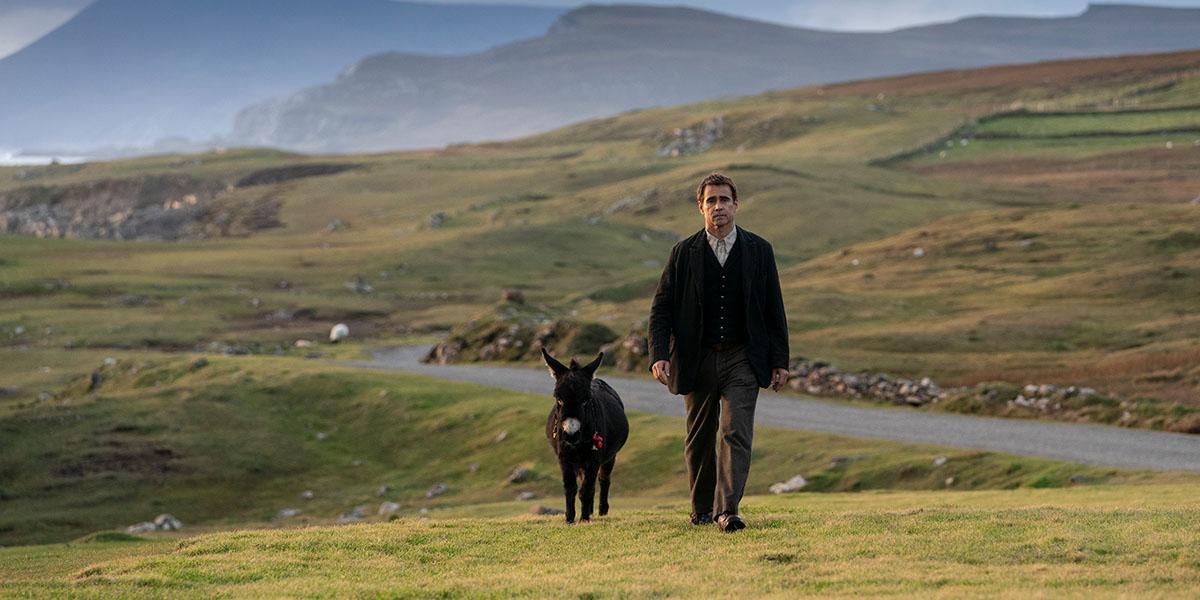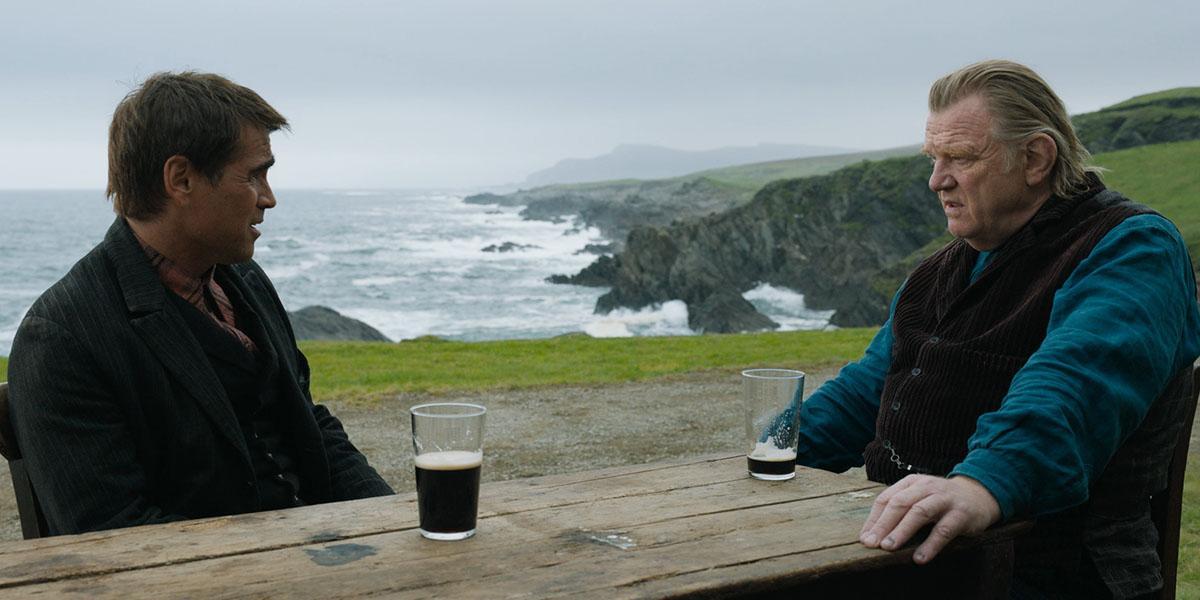Set on a remote island off the west coast of Ireland, ‘Banshees by Inisherin‘, directed by Martin McDonagh (‘Three advertisements on the outskirts‘), tells the story of lifelong friends Pádraic (Colin Farrell) and Colm (Brendan Gleeson), who find themselves at a dead end when Colm unexpectedly ends their friendship. A shocked Pádraic, aided by his sister Siobhán (Kerry Condon) and Dominic (Barry Keoghan), the island’s troubled young inhabitant, struggles to mend their relationship, refusing to take no for an answer. But Pádraic’s repeated attempts only serve to bolster his former friend’s resolve, and when Colm gives him a desperate ultimatum, events unfold very quickly and with shocking consequences.
‘Inisherin’s Banshee’ takes place in 1923 when the Civil War was raging in Ireland. The fictional island of Inisherin is unaffected, but there is tension across the continent. “Some nights you can hear gunshots and shooting, so we are very aware on the island that there is a civil war going on,” says Colin Farrell. “But we are also protected from that war because they are far from the coast.”
The Irish Civil War was fought from 1922 to 1923, following the War of Independence and the creation of the Irish Free State, which created a nation in half of the country that was separate from the United Kingdom. Two opposing groups, the Pro-Anglo-Irish Treaty Provisional Government and the Irish Republican Army (GONNA) contrary to the treaty, they fought to seize power.
However, what is happening in Inisherin – the division between padraic and Colm and the growing divisions with other people on the island – are a reflection of what is happening on the mainland. There are allegorical aspects of the division between these two men and the division between the two sides in the Irish Civil War, McDonagh comments. “It is a story in which a small war is being waged between two men at the same time as a much larger one is taking place elsewhere.”
Brendan Gleeson describes civil war as a catastrophic consequence that can arise from a fight for freedom. In the case of the conflict in Ireland, brother against brother and friend against friend. Historically, its end entailed terrible atrocities. “I think the divisions that are festering on the island and the savagery of what happens in the film is reflected in what happens on the mainland. Everyone clings to their little positions, which makes the divisions fester and worse.”
Martin McDonald He had never done a period drama before and he thoroughly enjoyed bringing historical people and characters to life. “When you set the story in the past, it opens up so many possibilities,” she says. A period setting also prevents the film from having an expiration date as quickly as a story set in the present day. In the film ‘Hiding in Bruges’, the writer-director tried not to include modern references, in order to create a timeless atmosphere. ‘Three billboards on the outskirts’ also had its own autonomous clock. ‘Inisherin’s Banshees’ does not adhere to strict story boundaries. On the contrary, contains its own fantasy story: a mythical place, wilder than the continenta vein of madness that permeates everything.
The film’s title, for example, refers to a legendary ghostly figure in Irish mythology who cried at night to herald that a death was about to take place there. “If you’ve heard her sing at the top of her lungs,” says Farrell, “it’s too late for you.” Although she is not explicitly introduced in the film, an old woman in Inisherin, Mrs. McCormick played by Sheila Flitton (‘The Northman’) is the physical embodiment of the “banshee”.
“She represents a sinister gray watchdog on the island who never gets too physically involved but is always on the outside looking in,” says Farrell. “She seems to have an uncanny ethereal knowledge of what people’s vulnerabilities are. Where is her weak point? Where can they be attacked? She is fascinated by death ”.
The English title also refers to a piece of music that Gleeson’s character composes during the course of the film. “As the story evolves and unfolds, this piece of music is articulated through Colm’s violin,” says Farrell. “I say there are no Banshees on Inisherin. He may say that they exist but he does not believe that they call men to their doom. He thinks they sit and watch.”

What will the public take away from this story of two separated friends? Colm quarrels with Pádraic, leaving Pádraic, a nice, likable guy, vulnerable and unarmed. Colm is an artist, a creator who wants to invest his time to create. That is the dilemma that McDonagh’s new film tells. Should an artist give up everything to follow his true passion? And if he does, what repercussions does he have on the people around him?
Farrell believes that “pain begets pain. Anger begets anger. Violence begets violence. Human beings do terrible things. Pádraic is devastated and acts doing things that he would never have done. For whatever reasons, Colm is experiencing a state of agitation and pain, sadness, anger or fear that leads him to commit despicable acts.
“What does art mean if you treat others like dirt?” Gleeson wonders. “Is it worth the sacrifice? The consequence is that you must be willing to suffer for your art. I don’t entirely agree with that. But I think Colm, in his desperate darkness, has convinced himself that this is what he needs to show that he is fully committed to his passion.”
Beyond these intellectual questions, raised within the story, there is an innate spirituality in ‘Inisherin’s Banshees’. “McDonagh’s stuff is fun and has an anarchic element to it,” says Farrell. “But ultimately, I think his work stands the test of time because it’s moving and you can relate to what he does. We are not just telling a story of some people on an island. The film explores fidelity, friendship, separation, loneliness, sadness, death, mourning and violence: they are all very human feelings that we can all identify with and that we have all lived directly or indirectly.
In his work as a playwright, McDonagh had set two of his plays on the Aran Islands, three rocky islands at the mouth of Galway Bay in western Ireland, ‘The Cripple of Inishmaan’ (1996) and ‘The Lieutenant of Inishmaan’. ‘ (2001). McDonagh made a name for himself in the theater as an extraordinary wordsmith with extraordinary stories and extraordinary characters; a writer who brings darkness, comedy and humanity to his stories.
Gleeson loves to watch a movie and then have a conversation about what it means. “Martín knows how to mix and match things in his scripts. In this movie there is no hero. We are all heroes and villains, although there are some villains…”
Martin McDonagh hopes he’s created characters audiences haven’t seen before. “You will identify with some and disagree with others,” says the director. “It’s a lot of fun, but I also wanted to capture all of that sadness. Directors don’t usually want the audience to be sad. But it was part of the movie: a sad truth about this story, about Ireland at the time, and maybe about life.”
Source: Disney

